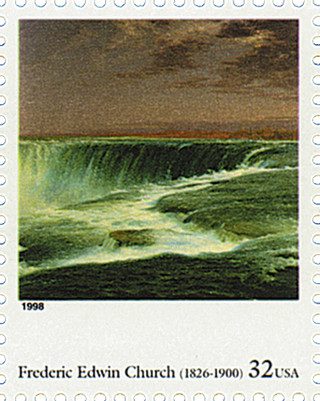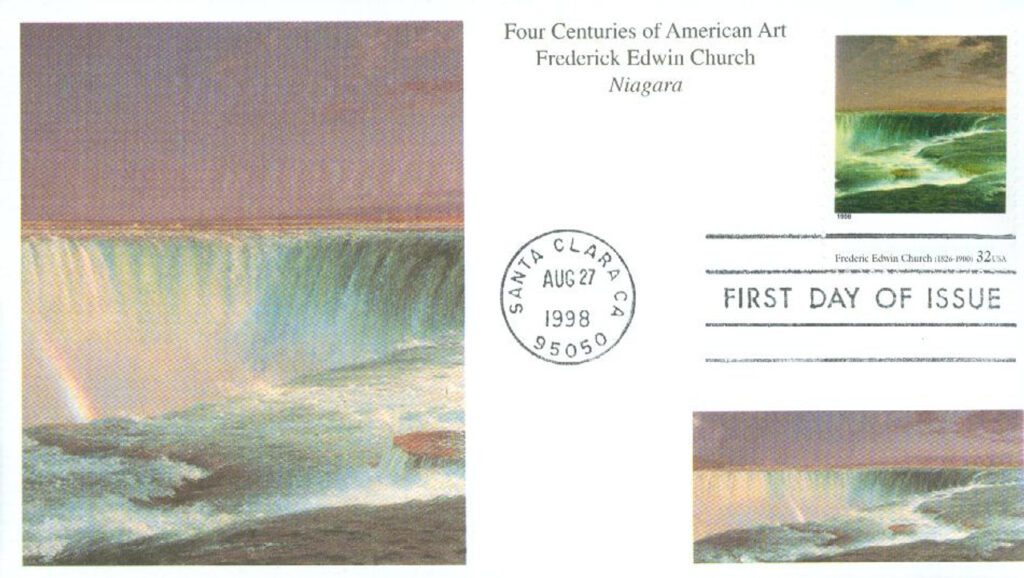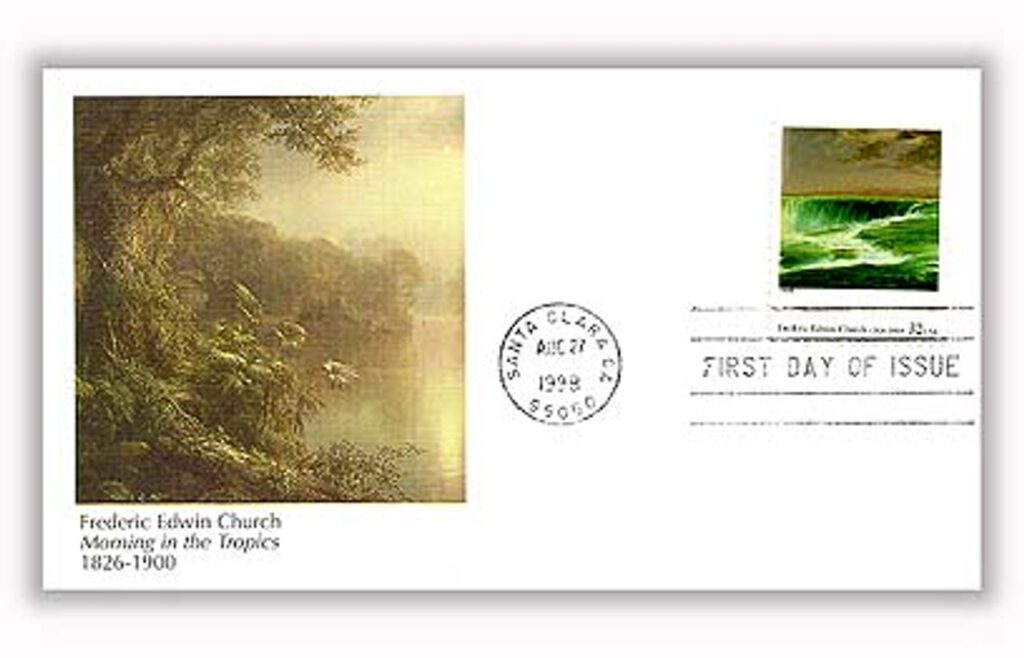Frederic Edwin Church was born on May 4, 1826, in Hartford, Connecticut. Known for his large, dramatic landscapes, he is one of the most traveled, best known, and most successful of the Hudson River School artists.
Church’s father had successful silver and jewelry businesses and directed several financial firms. His family’s wealth made it possible for him to pursue his dream of becoming an artist. In 1844, Church’s neighbor and founder of the Wadsworth Athenaeum, Daniel Wadsworth, introduced him to landscape artist Thomas Cole. Church studied under Cole and became part of his Hudson River School. The “school” was more of a movement – it was a group of landscape painters inspired by Romanticism. They painted New York’s Hudson River Valley and the nearby areas including the Catskill, Adirondack, and White Mountains, before expanding to cover other areas throughout the Americas.
Church studied with Cole for two years and impressed his mentor, who said he had “the finest eye for drawing in the world.” He sold his first painting in 1846, to the Wadsworth Athenaeum. After Cole died in 1848, Church stepped in to fill his mentor’s place. That same year, he became the youngest associate of the National Academy of Design, becoming a full member the following year. Church’s paintings of the late 1840s and early 1850s established him as a developing master and his work was exhibited at the American Art Union and the Boston Art Club.
Church became known for his dramatic landscapes. He highlighted the awe-inspiring effects of weather, atmosphere, and light on nature. As his style developed, he took a more scientific approach to painting than his mentor, making detailed sketches directly from nature as a basis for his compositions. The precision in Church’s painting captured the “realities of nature” by portraying amazingly life-like scenes.
Church also became one of the most traveled landscape artists of his generation. Initially, he traveled the US for inspiration, visiting the White Mountains, Massachusetts, the Catskills, Connecticut, Niagara, Virginia, Kentucky, and Maine. He was also fascinated with naturalist writings of foreign lands and took many trips to capture new scenes. He went to South America in 1853 and 1857, visiting volcanoes, the Colombia, Ecuador, and the isthmus of Panama. One of his most famous paintings, The Heart of the Andes (1859) was inspired by these travels. The highly detailed painting captures identifiable topography, climate zones, plants, and animals. When he debuted the massive painting (measuring 66.1 inches by 119.3 inches), he placed benches in front of it for people to sit and take it all in. Many even brought opera glasses to closely examine the intricate details. The painting sold for $10,000, the most for a painting by a living American artist at that time.
One of Church’s most famous works, Niagara, debuted in 1857. Nothing in America had been painted and described more often than Niagara Falls. Church’s version of the Canadian side of the falls eclipsed all earlier images. More than twice as wide as it is high (40.0 inches by 90.5 inches), the painting has a panoramic effect. Niagara was an instant success in the US, and crowds flocked to see it. It also toured in England, drawing audiences just as large. The painting was so impressive that one writer stated it was “Niagara, with the roar left out!” Church was then established as the “leading interpreter of the American Spirit.”
Church continued his travels in 1859, going to the Arctic and capturing scenes at Newfoundland and Labrador. When the Civil War broke out, he was inspired to paint Our Banner in the Sky, which he said was a symbol that “the heavens indicated their support for the United States by reflecting the nation’s colors in the setting sun.” Lithographs of the painting were sold to raise money for the families of Union soldiers.
After the war, Church traveled to Jamaica, London, Paris, Marseille, Alexandria, Egypt, Beirut, Petra, Damascus, Baalbek, Constantinople, Rome, and Athens. By the time he returned home, rheumatoid arthritis made it hard for him to paint, but he learned to paint with his left hand so he could continue his craft. Church spent some time in Mexico and died in New York on April 7, 1900. Olana, the home he built in Greenport, New York, was later preserved as a state historic site. Though Church’s popularity declined in his later years, in the mid-1900s, there was renewed interest in his work and he was considered the leading painter of his time.
Click here to view Church’s complete works.
| FREE printable This Day in History album pages Download a PDF of today’s article. Get a binder or other supplies to create your This Day in History album. |
Discover what else happened on This Day in History.
What inconclusive Civil War battle was the first of Ulysses S. Grant’s Overland Campaign? Check back tomorrow to find.






I cannot believe I have gone over 80 years without knowing of this wonderful artist. Thank you Mystic Stamp for bringing this into my purview. It is never too late to learn new things and appreciate them.
His paintings are magnificent, but my favorite still stands as another artist,
Albert Bierstadt.
Kudos to whoever did the research and put it in this really good read! Those paintings are beautiful! Thanks again.